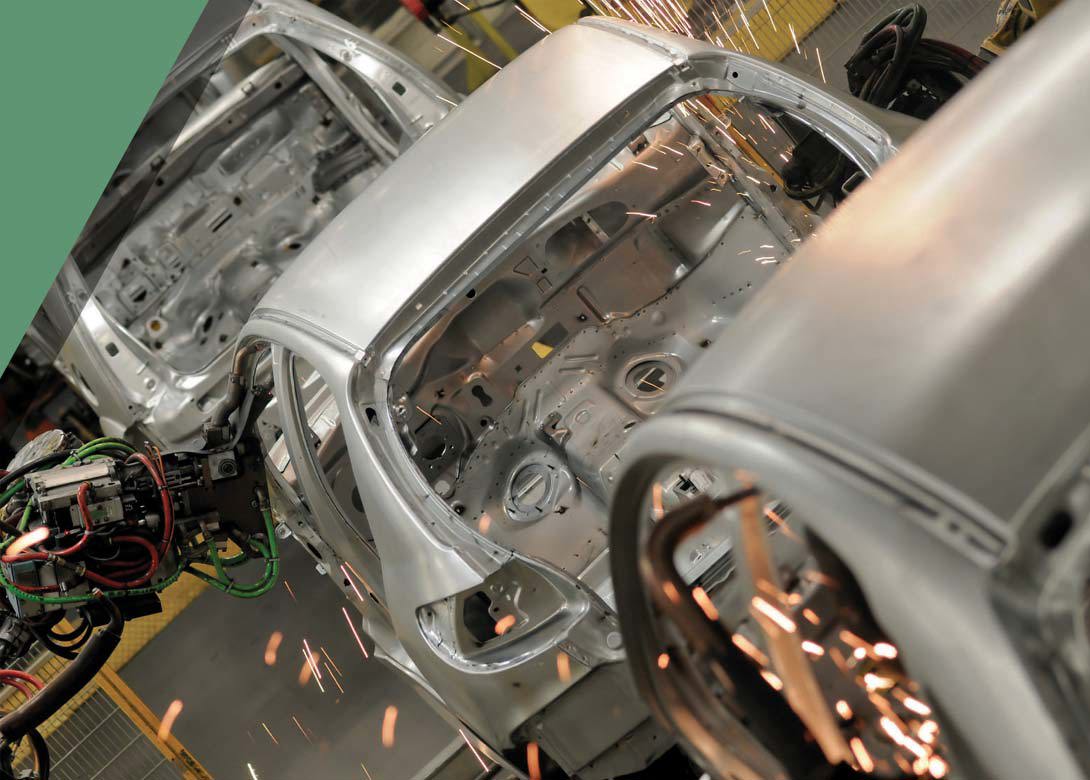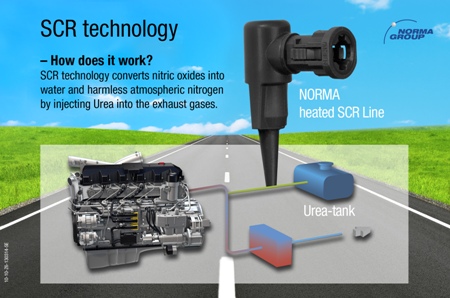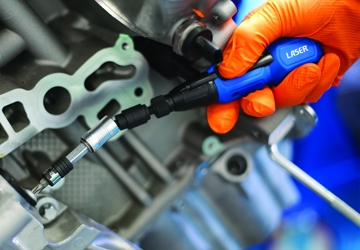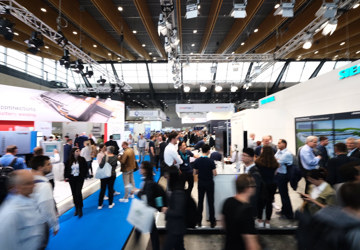

NORMA Group prides itself on being a global solution provider of engineered joining technology, working with its customers to find the correct solution.
We spoke to Stephan Mann, director of product development EMEA at NORMA Group, about why the Group works with customers to develop products, as well as it latest advancements in SCR technology.
NORMA Group is a solution provider of engineered joining technology. How does the Group ensure it is providing the technology its customers need?
“We ensure that we are providing our customers with the technology they need by working with them on their on-going developments, at a very early stage, to provide the right solution for the application.
We look to build up strong relationships with our customers through the departments that are ‘steering’ the development of new product lines (such as car lines, engine set ups for stationary engines, etc). We do this so that we can discuss potential solutions at an early stage. This is a must because otherwise you are simply providing a product, which every company can do.
At NORMA Group we do not provide just a product, but a solution to a problem, topic or issue that a customer may have. We have a very wide portfolio of products that covers more than 30,000 items. We can combine different types of products, for instance from our metal product section and our plastic product section, to provide unique solutions for the customer. We want to be pioneers and technology leaders, in cooperation with our customers.”
What are the usual steps you would take when working with a customer on a solution for an application?
“The classic way would be to start with project management, which would clearly define what the customer is looking for to ensure that we are targeting the right product solution. We would then focus on the development steps including studying the feasibility of a concept or idea, and then go through the phases of validation of the new product. We are in constant discussions with the customer to make sure that the performance of the product is meeting the customer’s expectations.
As important as the development of the product itself is the development of the processes to produce it. This means that in conjunction with the product we establish a secured process to enable us to produce this newly developed part - meeting the customers requirements not only in respect to the technical functions of the product, but also the quality.”
What are the benefits of NORMA working with customers on future developments?
“The main benefits would be that we have a very wide portfolio of solutions. Take our Urea products as an example. We have the knowledge about SCR systems to design the Urea feeding systems into the exhaust, but with this knowledge we are also able to transfer it into other applications such as exhaust pipe couplings and profile clamps, which are all used in conjunction with the Urea fluid system.
If you want to reduce NOx in the exhaust and you have to transport the exhaust from the manifold to the catalyst. It is important that this path is leak free, which is why we are designing leak-free exhaust pipe joints. Additionally, we know how the dosing unit works, what it looks like, and what the requirements are. Therefore we provide profile clamps to fix the dosing unit into the exhaust system.
This is something outstanding from NORMA Group, the ability to provide products for a whole range of exhaust related products, not only the Urea systems, but the fasteners that are needed for a good working exhaust system. It is by using the knowledge from one side of our business and applying it to other products, that enables us to offer our customers the complete solution.”
NORMA Group has seen recent advancements in its Selective Catalytic Reduction (SCR) technology, what are these advancements?
“We learnt a lot from the first Urea line system we introduced to the market a few years ago. We were one of the pioneers providing Urea lines for SCR applications, which were mainly driven by the demand from the automotive industry.
Due to what we have learnt we now have the potential to improve the system, through the processes and process stability of the production of this product, as well as in regard to the performance of the system.
An example of this is the heating system in the Urea system. In the beginning the first Urea system just had electric heating wrapped around the tube from the outside. You need to have heating in the system because the Urea fluid freezes at -11°C and so to ensure the function of the system you must have an electric heating to quickly de-freeze the system.
Having the heating wrapped around the outside of the system was very inefficient, as whilst some of the heat would go into the system, there would be some lost to the surroundings. Because of this our generation two Urea system has the heating component inside the tube, in the fluid. This means that all the heating energy produced goes directly into the medium, and that the heating efficiency of the system is much better, helping to reduce the amount of electrical power needed, which in turn helps to lower fuel consumption.”

What effect will the latest edition of the European emission standard, Euro 6, have on the market and SCR technology?
“The upcoming Euro 6 legislation will be introduced in Europe in January 2014 for newly registered trucks and buses and in September 2014 for newly registered passenger vehicles. It will be continuing to demand lower NOx levels in the exhaust. The root cause of this is that high efficient diesel engines are equipped with high-pressure injection systems and have a high compression ratio. This combination causes a very good fuel efficiency, but contributed to that is a high NOx reading. To make the engines greener, these NOx readings have to be lowered.
Urea systems help bring down the NOx readings of the exhaust and are needed to meet the Euro 6 requirements.
To fulfil these requirements there are two factors that are relevant to NORMA Group’s systems. One is the downsizing of the engines, which means there is a need to work in tighter spaces and surroundings, because the Urea must be dosed in a very efficient way. The other thing is that the engine set up is varying now and the SCR catalyst is moving closer to the engine, which means there are higher requirements regarding temperature resistance.
This means that the demands on our system are increasing – temperature wise – and with the temperature comes pressure demands.
If you are above 100°C you need to pressurise the system more and more to make sure you don’t get vapour into your line due to the fluid boiling.
Decomposing of the Urea fluid has to be respected so we have to have a clear view on the handling and treatment of the Urea fluid in the system. We are looking at our next generation of line systems with a very detailed view on temperatures and pressures inside the systems.
Our Urea systems already comply with the upcoming edition of the Euro 6 standard and we are constantly looking at other ways in which we can improve our product. For instance with the generation two Urea system we are using specialised plastic materials to ensure that we can provide components that are weight optimised, and that we can offer a lighter design. This means that we are helping reduce weight in the car, which again will help reduce emissions. In addition to this we are already working on further development on Urea lines, which will be introduced in the next 4/5 years.”

Having spent a decade in the fastener industry experiencing every facet – from steel mills, fastener manufacturers, wholesalers, distributors, as well as machinery builders and plating + coating companies, Claire has developed an in-depth knowledge of all things fasteners.
Alongside visiting numerous companies, exhibitions and conferences around the world, Claire has also interviewed high profile figures – focusing on key topics impacting the sector and making sure readers stay up to date with the latest developments within the industry.





